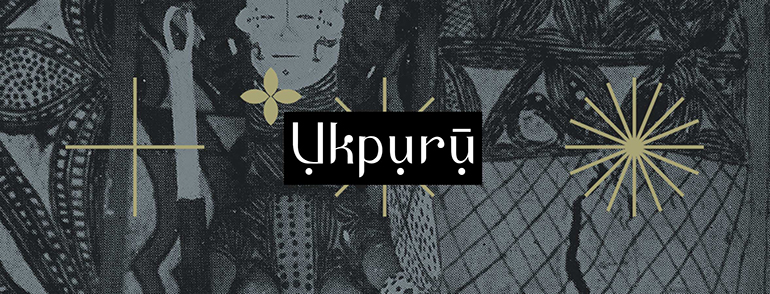
Burial rites and hand washing, food offering at an Igbo funeral in Isele Azagba. Photo by Northcote Thomas, 1900s, coloured by Ụ́kpụ́rụ́ 2017.
People were buried as soon as possible in Alaigbo, usually within the same day of their death with the exception of titled and wealthy men whose interments were planned for longer while their bodies were preserved. The planning of a prominent persons funeral had the lying-in-state of the body put into consideration, this event drew in people from distant areas (mgbaru); money and other worldly possessions including the deceased persons tools of trade in life like a blacksmiths hammer or a farmers hoe were laid out on display next to the persons body.
Leaders and heads of state were not announced as dead to the public until certain rites took place, this event known as ikpo oku could be done well over a year after a leaders passing. Most people were buried near or within their compound, a titled elder was buried in their obi, or living room. In old times, as is the case today, people living abroad made plans for they or their relatives bodies to be taken back to their ancestral home. On the other hand, in cases where people were considered to have had a ‘bad death’ their bodies were thrown away into a designated bush, usually an ajọ ọhia, or bad bush, some bad deaths included deaths by capital punishment and from serious diseases like small pox. The burials of deceased children were not given much fanfare, children were buried very quickly, almost immediately or very early in the morning or late at night. When married women died their bodies were taken to their fathers home to be buried, except in cases when sons were present to bury their mothers as they wish.
A corpse was handled as a source of extreme pollution, when preparing the body with nzu (chalk) and uhie (camwood) the preparers and bearers of the body were sure to wash themselves thoroughly after such contact. In old times, the body of an ordinary person was wrapped in a grass mat and put on a stretcher with a single cloth covering the corpse. Titled men and some women were buried in burial chambers sitting upright on a stool against the chamber wall. There were days in various communities when burials could not be held, usually on ehi eke (eke day). Women and men mourned their husbands and wives for seven Igbo weeks, 28 days, and nine Igbo weeks, 36 days, respectively and shaved their heads in front of observers and would not work for that period. A nwanyi ajadu, ogidi, or ekpe, a widow (widowers are called ajadu nwoke, or oke ekpe), stays near an ọkpụkpụ ntụ, an ashy fireplace, in a secluded hut called akwụ wearing aji (black bark cloth) for the duration of the mourning period (mkpe) and was fed by her children and relatives, after some rites during the period she would carry out the final ritual of ikpa ntụ asaa which involves clearing the ashes. In some communities seclusion for 28 days was also done by parents mourning their deceased older children.
After the initial burial of a deceased elder, a rite known in many Igbo communities as ikwa ozu was held for them in order to help their spirits reach the spirit world and secure a place among the ancestors, ndi ichie. This is still done and includes festivities with much merriment, eating and drinking that could run on for several days depending of the stature of the deceased figure in the community. Special rites are done during the ikwa ozu involving people of the same age-grade and title of the deceased person (ebiri onye) which varies depending on the community. The concept of ikwa ozu seems to have merged with the idea of a thanksgiving celebration after a burial as Christianity rose in popularity in Alaigbo and as some Christians have opted out of participating in indigenous spiritual practices.

No comments:
Post a Comment